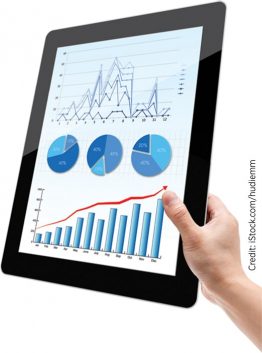Use ‘big data’ when it provides a clear benefit
Follow Terry Griffin on Twitter – @SpacePlowboy.
Data is big business. It pervades all areas, from political polls and sports analytics down to farmers’ fields. What it includes continues to expand as leaders bring into play growing reams of information in order to make more enlightened decisions.
‘Big data’ refers to massive data sets created from click streams, email, instruments, Internet transactions, satellites, sensors and all other sorts of digital sources. Terry Griffin, cropping systems economist at Kansas State University’s agricultural economics department, says big data in farm terms can span management practices and technologies, and include seeding depth, seed placement, cultivar, machinery diagnostics, dates of tillage, planting, scouting, spraying and input application.
In order for ‘farm data’ to become big data, it must be shared so that it becomes aggregated within a community of data from many other farms, Griffin says.
“It’s not just that the value of big data is in sharing. Sharing is a necessity to be considered big data.”
A paper he wrote reveals how technological advances like computation, data storage, communications and sensing are fuelling big data’s capabilities. “Big data can provide us with access to an enormous quantity of data from diverse sources with minimal lag times or in real time,” the paper says.
Opportunities

Big data has the potential to fuel agricultural productivity, and offers numerous opportunities for farmers to use inputs more efficiently and accelerate decision-making.
For instance, reliable sensor data can improve field-level nutrient management and reduce pesticide leaching and runoff, and smart irrigation systems analysis can play a big part in strategies that would conserve irrigation water in dry areas, the paper reports.
The paper adds that GPS-assisted navigation can contribute to decreases in on-farm energy use, reducing agriculture’s carbon footprint, while farm record digitization and automated data uploads can assist in implementing nutrient management plans in livestock feeding operations.
“Over the long term, farm microdata will feed back to research and development efforts driving innovations in equipment, remote sensing, chemicals, and biotechnologies, facilitating greater progress towards sustainability,” the paper says.
While field-level data’s value is limited to a specific field, a community of aggregated data has wider potential value for management decisions.
“Big data’s inclusion of outcomes from differing management strategies, along with other economic variables of interest, will increase the depth of analysis for farm management strategies,” the paper says.
Risks
These new technologies, however, also afford potential risks. There are no federal laws restricting the disclosure of farm data, and third party release of information by accident or design is a real concern. Another is: who controls the information?
Aggregating data into big data also creates the potential to inform profit-making firms, as well as to influence the marketplace by being accessible to only a smaller number of players in the farm economy.
“In many cases, the data are collected by private entities that would profit from aggregating data into useful market information, often with the purpose of selling back value-added products to the same farmers who provided the data,” Griffin’s paper says.
He notes farmers are reluctant to share their data, concerned about loss of ownership and control. They see the ramification of relinquishing control as possibly giving up their bargaining power, as well as fearing their own data will be used against them.
“There are several risks associated with farm data and many risks that farm data helps to mitigate,” Griffin says. “These risks must be understood before cognizant decisions can be made.”
He believes control of intangible resources like farm data needs discussion. Some aspects of farm data are valuable when it can be controlled by the farmer, but when it’s shared, control of that intangible resource has been relinquished.
“Some benefits of farm data are only achieved when the data are analyzed in a community. For nearly all uses of farm data in a community, there are risks but also opportunities. In all cases, farmers should compare the costs against the benefits.”
“Some benefits of farm data are only achieved when that data are analyzed in a community,” says Griffin.“For nearly all uses of farm data in a community – i.e. big data – there are risks but also opportunities. In all cases, farmers should compare the costs against the benefits.”
He recommends farmers ask prospective data companies how many growers, farms, fields and acres are in a data community, what community analytics conducted will benefit their farms, as well as what data quality control standards are being used.
No rush to join
Big data’s value differs among farmers, retailers, manufacturers and aggregators, and the value to any one producer is small compared to that of the aggregator.
Many producers are choosing to wait for a variety of reasons, which is a decision Griffin agrees with.
“It has and continues to be my recommendation that farmers wait to join farm data services until they see a clear benefit outweighing any perceived costs,” Griffin says. “If you don’t see value in moving forward then wait until there is value.”
He recommends farmers collect their own data, even if they don’t currently use it, as well as calibrate and backup that data while maintaining its quality.
“I think that when the time and service is right, the answer will present itself such that farmers will know what to do.”





